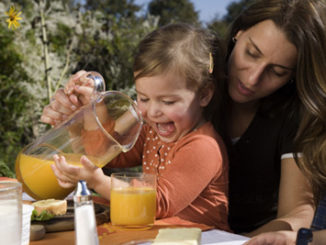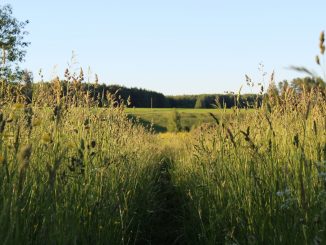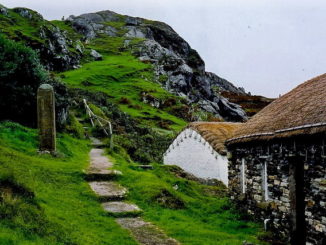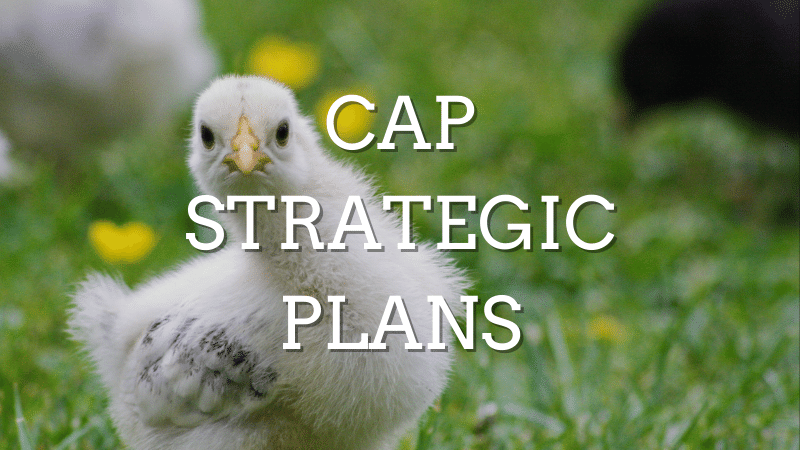
The invasion of Ukraine by Russia has sparked a debate on food security in Europe. Three months later, the fear of food shortages is still used as a pretext to question environmental goals of the CAP and the Green Deal more broadly. The Commission is also pressuring Slovakia, Hungary and India who decided to limit their exports of cereals. And while Commissioner Wojciechowski and Timmermans were feuding on twitter, reviving the unproductive opposition between food production and environmental protection, the European Parliament approved the Organic Action Plan without the Farm to Fork target of 25% of organic by 2030. Therefore, it is important to clarify our vision on food security. In this article, we set things straight on the derogation to allow production on fallow land, analyse the state of grain production and use as feed in Europe, reflect on what it entails for the future of the livestock sector and screen some CAP Strategic Plans and related Observation Letters to see what can be expected in the years to come to achieve coherent food security in Europe.
Fallow lands, the new El Dorado?
Following its communication on food security, the European Commission (EC) adopted an implementing act allowing Member States to produce crops for food and feed on fallow lands that are part of Ecological Focus Areas (EFAs) while maintaining greening payments. It is important to understand that this derogation will only impact the lands lying fallow for which farmers are receiving the EFA subsidy. This EFA subsidy from the previous CAP 2014-2022 period retributes farmers if they dedicate 5% of their production area to agroecological practices. Leaving the land fallow is only one of the many practices (implementing nitrogen fixing crops, buffer strips, cover crops…) that farmers could choose from to receive the subsidy and represents only 18% of the total EFAs area, as shown on the figure below.
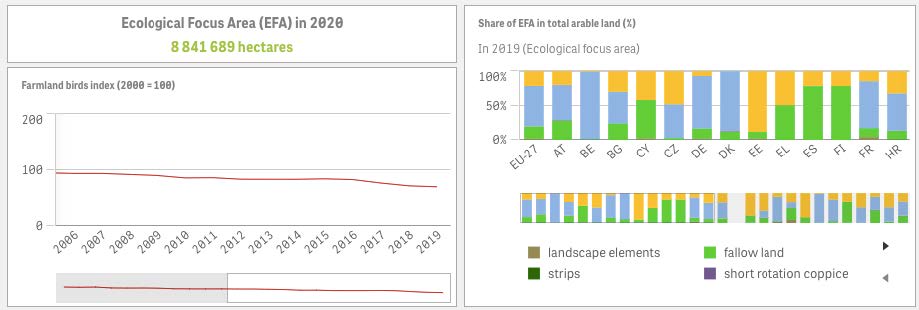
Even though it is true that, according to FAO statistics, fallow land accounts for 5 to 6% of the utilised agricultural land (UAA) in Europe, the derogation will only directly impact the subsidised fallow land under the EFA greening payment which represents only 1% of the UAA.
More important than the scale of this decision, by allowing the use of chemical inputs on laying fallows, this derogation can be seen more as a symbolic political move rather than an effective measure. It sets a potential precedent for agri-food lobbies to push for derogations in the next CAP programming, on conditionalities such as GAEC 8 which requires a minimum share of at least 3 to 4 % of arable land at farm level devoted to non-productive areas and features, including land lying fallow.
EU grain production and use
Grain availability is at the root of the food security debate. It is the reason for which the derogation on fallow land has been implemented. As we’ve shown above, production on fallow land can only have a small impact on volumes. But if we want to ensure grain availability, at a fair price, we have to look at other parameters of grain use in Europe.
The table below shows that 55% of all cereal production is used as feed. The equivalent of almost all the maize produced is used as feed and a large portion of UAA is dedicated to growing silage maize. In total, it has been estimated in a report by Greenpeace that 62% of EU cropland is dedicated to growing feed for livestock. Our livestock production system also impacts land use outside of Europe because of a high dependency on imported Soya bean meals and Oilseed meals. The table below synthesises feed data from the EC, with in red, the data on which these estimations are based.
| Protein Source | Total EU production
|
EU imports | EU exports | Total EU domestic use | Total EU feed use | Feed use of EU origin |
| Roughage | – | – | – | – | 1332 | 1332 |
| Grass | 1019 | – | – | 1019 | 1019 | 1019 |
| Silage maize | 247 | – | – | 247 | 247 | 247 |
| Crops | – | – | – | – | 181,7 | 161 |
| Cereals | 319,6 | 24,9 | 49,9 | 294,6 | 176,6 | 156,3 |
| Common wheat | 147 | 2,1 | 33 | 116,1 | 49,8 | 47,7 |
| Maize | 70,1 | 20 | 4,7 | 85,4 | 68,5 | 50,5 |
| Co-products | – | – | – | – | 85,9 | 45,3 |
| Oilseed meals | 30,1 | 24,2 | 1,3 | 53 | 52,8 | 14,3 |
| Soya bean meals | 11,6 | 18,5 | 0,3 | 29,8 | 29,6 | 1 |
Table 1 : Source of feed use in the EU; made from the EU protein balance sheet 2011-2020; Million Tonnes
It is essential to think in terms of production that is potentially human edible or using agricultural areas to produce food instead of feed. Cereals, although varying in terms of gradings (e.g., moisture content, foreign matter contamination), are human edible and thus feed is in competition with food. Silage maize is produced for feed purposes only but is grown on UAA that could be used to grow other types of human edible food.
In total, 71% of all UAA is dedicated to growing feed but half of it consists of permanent pasture. The grass growing on permanent grassland can only be used by ruminants. They allow for the transformation of non-edible production into edible meat and dairies. Some would argue that, in Europe, a certain amount of pasture could be turned into cropland. But those permanent pastures are home to specific ecosystems and biodiversity. Moreover, meta-analyses and literature reviews indicate that grassland can function as net carbon sinks when the density of livestock is balanced. They also are essential in the polyculture-livestock system that is a good way to reach circularity in food systems, by helping to close the nitrogen cycle.
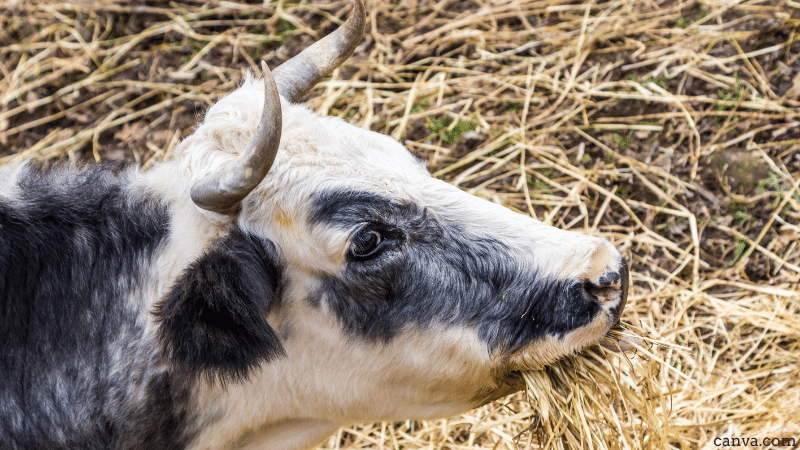
Only knowing those numbers can we start to reflect correctly on the food security debate. In 2021, Ukraine exported around 20 million tonnes (MT) of wheat and 20 MT of corn[1]. Assuming that, in the context of securing food supply, grains could be interchanged for at least parts of food and feed uses, a flexibility in feed-food allocation of grains in Europe could provide a big leverage. A hypothetical loss of Ukrainian production would represent around 20% of the EU cereal production used for feed, but we can also find leverage in UAAs that could be turned from silage maize production to produce other crops. Moreover, the EU is a net exporter of grain, with a positive trade balance of around 20 MT.
Even without talking about other obvious leverage points such as food used for first generation biofuels, we could secure food supplies in Europe only by rearranging our cereal feed and UAA use. We could also help other importer countries to secure their supply if we decide to keep our exporting capabilities. This kind of changes are obviously long-term based and might be hard to put in place quickly in reaction to current imbalances but, if we want to rethink our food system in terms of food security, we have to establish a long-term vision now.
Livestock production and meat consumption
Assuming that livestock systems were to be shaped only by supply and demand arguments (thus neglecting important socio-ecological considerations), to decide what should be changed in the European livestock sector to free grain stocks for human consumption, we have to look at different farming systems (e.g. mixed vs grassland vs feedlot bovine). Figure 2 below, based on the Global
Livestock Environmental Assessment Model by the FAO, summarises their distribution worldwide.
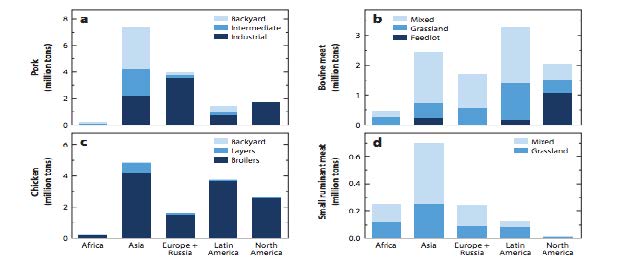
In Europe, chicken and pork are mainly produced industrially (i.e. intensive systems with high density and use of external inputs ; industrial and broilers on the figure) while ruminants are mainly raised on grassland or in mixed systems. According to the FAO Model, cattle raised on grassland or mixed systems consume, on average, 6 kg of human edible dry matter + soybean cakes per kg of protein produced while pork and chicken in industrial systems consume 20kg[2].
There are multiple good reasons for reducing industrial granivore (animals feeding on seeds and grain ; pork and chicken on the figure) production. In terms of food security, it would free up large amounts of cereals. But food security is not the only reason for which reducing our meat consumption would be a good idea. Experts in climate, biodiversity, public health as well as medical experts have published a thorough article in the Lancet highlighting many benefits this reduction could have. Although criticized for lacking to highlight regional specificities in food cultures and agrarian models, it still provides a good base for reflection. Our level of processed meat consumption is proven to be a key component leading to health issues such as cancers and increased chances of developing type 2 diabetes. Meat production accounts for 12-17% of overall GHG emissions and has shown limits in improving animal welfare. And according to another study by Cambridge University, the European Nitrogen Assessment, the environmental and health cost of Nitrogen pollution is estimated at €70 to €320 billion per year. For health and environmental reasons, the EAT-Lancet team estimated that global meat consumptions should be halved by 2050 with most reductions needed in OECD countries.
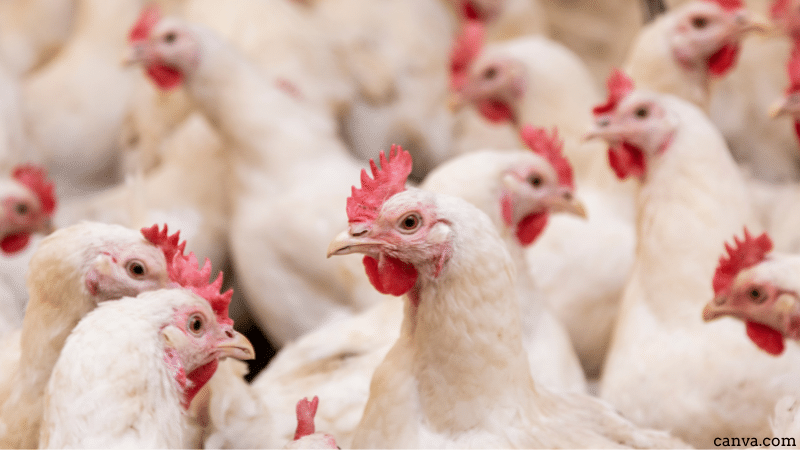
Halving our meat consumption means choices have to be made between the production systems we will keep and the ones we will leave behind. Following the conclusions of the Ten Years for Agroecology (TYFA) Model, it is a reduction of pork and chicken consumption that should be our priority. Their feed rations is almost completely in competition with food. Further, based on an agroecological approach and as explained before, there is a strong gain in keeping permanent grassland for livestock breeding.
Moreover, in recent years, pork and chicken production exceeded European consumption by respectively 16% and 8%. Figure 3 here below show that despite a mostly stable production of pig meat, exports have more than doubled. Rather than adapting production to EU population demand or needs, the system has been fueling exports, mostly to provide meat to China.
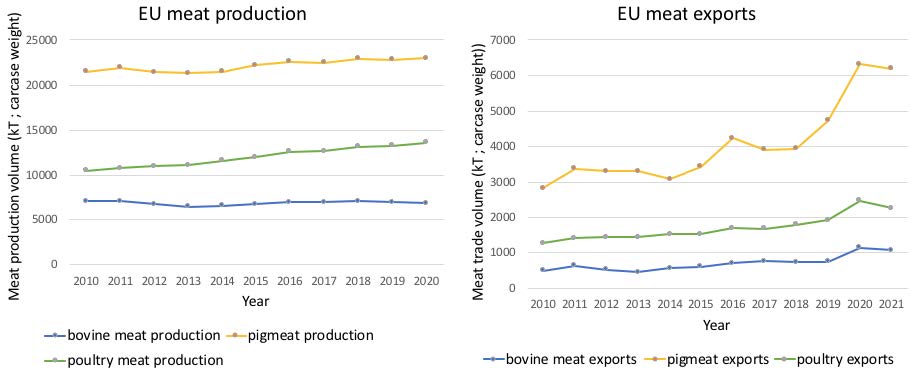
Importantly, in the TYFA Model, all livestock are fed with low-opportunity-cost feed, meaning they rely entirely on grass, byproducts and wastes. This hypothesis reduces naturally by at least 70% our granivore meat production because they would rely on byproducts and wastes only. It also naturally restricts the density of ruminant herds on pastures which would also make sense for environmental reasons as it would reduce methane emissions and risks of manure overload, leading to nitrate leaking and water pollution. In the end, bovine meat would mostly be a byproduct of milk production and the system would allow for an average consumption of 300g of meat and 630g of milk per week, per person.
It has been calculated that a European food system relying on low-opportunity-cost feed only would produce around 45% of the meat proteins that are currently produced in Europe. This checks the needs of the TYFA hypothesis for an agroecological Europe and the recommendations from the EAT-Lancet team. If we use farm animals for what they are good at agronomically, converting byproducts and grass into edible food and closing the Nitrogen cycle for fertilization, they can contribute to food security while helping to reduce the global environmental impact of food systems.
Is the CAP equipped for this change?
Together with trade policies, the CAP, via its subsidies and market interventions, has a strong impact on the livestock sector. According to the EC, 73% of coupled aid is dedicated to livestock in Europe. Moreover, a large amount of acreage-based direct payments are linked to the production of feed. According to an earlier Greenpeace study, at least 68% of all direct payments subsidise are linked to the livestock sector. It is thus of particular interest to check if policy instruments laid down in the CAP Strategic Plans (CSPs) could be used to address the needs to transit towards low-opportunity-cost feed for livestock breeding.
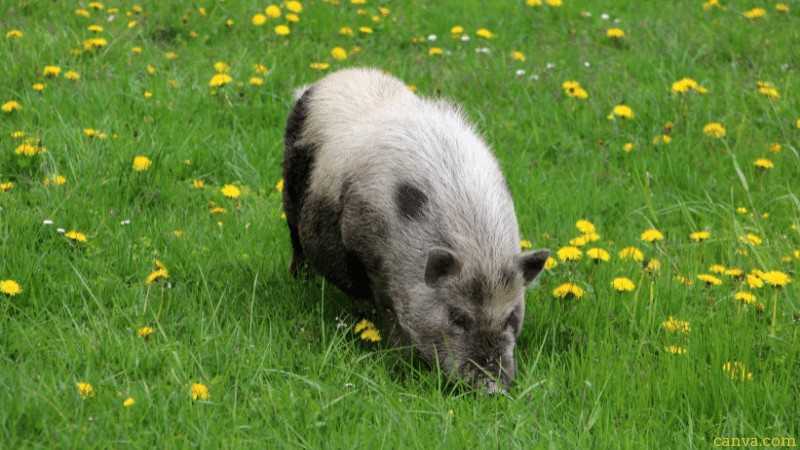
The potential of the CSPs to enable for a shift towards extensive grazing had already been discussed in our previous article on food security. We argued that coupled support and eco-schemes supporting extensive grazing lacked minimum standards in herd density, time spent grazing and use of local feed. To assess the influence of the CSPs on granivore farms, we will look at three countries where those productions are the most concentrated and industrialised. In the table below, you’ll find the share of pork and poultry produced in large industrialised farms, based on an economic output of 500 000€ or more.
| Countries | 2004 | 2016 | Variability (2004-2016) | |||
| Poultry | Pork | Poultry | Pork | Poultry | Pork | |
| Denmark | 71% | 68% | 96% | 94% | +25% | +26% |
| Netherlands | 88% | 47% | 100% | 82% | +12% | +35% |
| Belgium (Flanders) | 27% | 29% | 72% | 70% | +45% | +41% |
Table 2 : Share of pork and poultry produced in large industrialised farms ; source : greenpeace study
First Pillar
The scope of influence of first pillar instruments on those productions is not as wide as for cattle-meat and dairies. First, granivores are not targeted by subsidises through coupled income support. Concerning the basic income support (direct payments per hectares), the opportunity to be subsidised is highly influenced by the level of competition for land accessibility. In The Netherlands, the average pig farm has 2500 pigs on 10ha where in Denmark, the average pig farm has 3500 pigs but on 170ha. Mixed pig farms in Denmark have the opportunity to self-produce crops for feed while Dutch ones are dependent on purchased feedstuff and disposal of manure off farm.
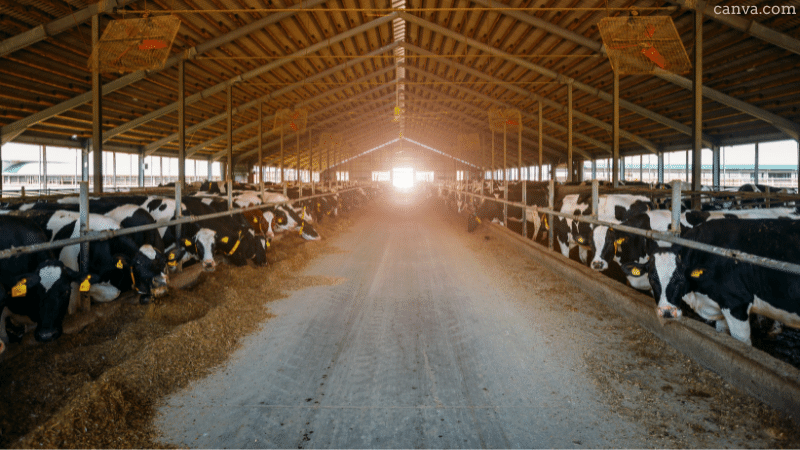
Finally, none of these countries have proposed eco-scheme to support non-industrial granivore farming, to use waste and by-products as feed or to introduce more ambitious standards in animal welfare such as minimum spaces and time spent outside. There are also no sectoral interventions, which are meant to strengthen the competitiveness and position of farmers in the food supply chain mainly by supporting producer organisations, linked to the granivore industry in those three countries.
Second Pillar
Within the Rural Development funding, most of the subsidies that could benefit the granivore industry are investments in infrastructure, sometimes for animal welfare with, for example, free range housing investments in Denmark, but mostly for productivity. Some subsidies are also dedicated to decreasing antibiotic use. Other type of rural development supports could address the protection of indigenous breeds of poultry and pigs to protect agricultural biodiversity and quality products, for instances through Protected Designation of Origin.
Common Organisation of Markets (CMO)
The granivore sector has recently been supported by market measures from the CMO. Two CMO measures of the EC’s Food Security package will support the pig meat sector, directly and indirectly. First, market safety net measures are deployed with the granting of private storage aid. Second, a support package of 500€ millions from the crisis reserve is aimed at supporting producers facing increased input costs. The package will therefore also support monoculture crop production for which the fertilizer prices also increased and, as we’ve seen, those crops are largely produced as feed for granivores.
Conspicuous by its absence…
Apart from direct payments that mostly mixed granivore farms receive, the CAP has a limited impact on granivore production. Minimum requirements for granivore systems are framed by other directives, notably on water pollution and animal welfare. No GAEC does directly impact the industry. This absence of overall influence of the CAP in limiting industrialisation could explain why, in the past 15 years, most countries have seen the share of large industrialised granivore farms increase (see table 2 above). For example, in Denmark, insufficient CAP payments for maintaining extensive grasslands have been linked to the increase in industrial pig farming[3].
In its Observation Letters, the EC, which previously specified that the consequences of war in Ukraine such as grain shortages should be taken into account in the revision of CSPs, has made very few comments on granivores. Only a few recommendations and requests on animal welfare, addressing tail-docking for pigs and confined housing, as well as requests on ammonia pollution can be found. This is clearly a big hole in its strategy, knowing the big impact granivore production has on grain availability and that chicken and pork meat represent 83% of the meat produced in the EU. Though the EC acknowledged in its Food Security communication that “Reducing dependence on feed imports is part of the larger transformation of the EU food system, including a shift towards more plant-based diets”, somehow remodeling the granivore sector doesn’t seem to be a priority and the Food Security debate didn’t seem to change that line.
Conclusion
The granivore industry has completely integrated the highly specialised and capitalistic logic of modern agriculture. It has not been resilient in the face of market imbalances, as the support package from the CMO exemplifies, but is also highly exposed to health issues as we’ve seen in recent years with the rapid propagation of the African swine fever. It produces meat in quantities that exceed our current consumption, dietary needs and respects neither environmental boundaries nor basic animal welfare standards, as the European Parliamentary Research Service briefing acknowledges in its pig meat sector summary brief.
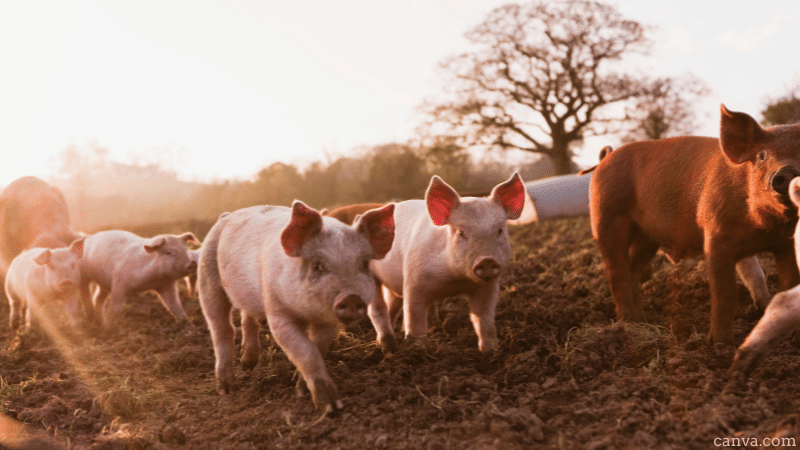
“Evidence shows a lack of compliance with EU regulations on the welfare of pigs and the persistence of harmful routine practices. Another challenge is the air, soil and water pollution caused by industrial pig farming, which takes a heavy toll on the environment”. EC itself. Transitioning out of it is thus imperative.
So new instruments of transition need to be created. But the CAP is not yet equipped with the necessary tools to do so. Therefore, the issue of the granivore industry has been mostly side-lined, even in the food security debate for which it should have been central. This reflection must actively start now as accompanying the dismantlement of an industrial system has historically caused vast social struggle. In that matter, we must learn from past experiences. A good example in Europe is the closing of mines at the end of the 20th century. In the UK, led at the time by Prime Minister Thatcher, the situation was handled without recovery plans for workers and in complete opposition with Union’s recommendations. It resulted in one of the largest social movement from the 20th century. The Iron Lady criminalised the protesters and went further by decreasing social benefits. Today still, the consequences of closing the mines without social support can be observed economically as the regions where mining made a great share of the local economy are still among the poorest in the UK.
In Europe, the livestock sector employs around 4 million people. Most of them already work in mixed or non-industrial systems. But for the others, the CAP budget should be used to help them transition to agroecological systems or shift completely to new production. All the needs of those farmers must be met by policy instruments. As the number of farmers and farms rapidly decrease in Europe, it is clear that no one should be left behind. Therefore, some measures would be imperative :
- As indebtedness is almost inherent to industrial systems, budgets must be freed up to cover the debts of farmers who invested in infrastructures that would become obsolete (‘stranded assets’)
- Investments in formation and technical accompaniment are needed to spread agroecological knowledge and accompany the farmers that have to completely transform their farms.
- Investments in new infrastructures would be needed, such as drying barns or mobile slaughterhouses in order to allow for a homogenous distribution of livestock in rural areas.
Another important point to keep in mind is the fact that pork and chicken are more affordable than bovine meat. It makes a big part of lower income families diet. Food affordability, including meat, must be insured and should not be opposed to farmers getting a fair price.
More ideas should be developed but this can only happen if we completely acknowledge the issue, understand that ticking box solutions won’t be enough for such a transition and finally create the right tools. In order to pave the way towards low-opportunity-cost livestock systems, the whole architecture of the CAP should be revised. The budget should be mostly redirected towards organic farming and other agroecological practices, as well as completely supporting the costs linked to production system transitions.
[1] https://www.reuters.com/markets/commodities/ukrainian-grain-exports-this-month-much-lower-than-may-2021-ministry-2022-05-19/#:~:text=The%20ministry%20data%20showed%20that,5.68%20million%20tonnes%20of%20barley.
[2] https://www.annualreviews.org/doi/pdf/10.1146/annurev-resource-111820-032340
[3] https://www.greens-efa.eu/files/doc/docs/f9a6e0b649a9a238d21f6620886dd014.pdf
Download this article as a PDF
 This article is produced in cooperation with the
This article is produced in cooperation with the
Heinrich Böll Stiftung European Union.
More on CAP Strategic Plans
A Just and Green CAP and Trade Policy in and Beyond the EU – Part 2
A Just and Green CAP and Trade Policy in and Beyond the EU: Part 1
Bulgaria’s CAP Strategic Plan: Backsliding on Nature and Biodiversity
Changes “required” to Ireland’s CAP Strategic Plan – European Commission
French CAP Plan: What Opportunities for Change During the New 2022-27 Presidential Term?
CAP, Fairness and the Merits of a Unique Beneficiary Code – Matteo Metta on Ireland’s Draft Plan
ARC Launches New Report on CAP as Member States Submit Strategic Plans
Slashing Space for Nature? Ireland Backsliding on CAP basics
Quality Schemes – Who Benefits? Central America, Coffee and the EU
Civil Society Organisations Demand Open and Ambitious Approval of CAP Plans
CAP Strategic Plans: Germany Taking Steps in the Right Direction?
CAP Strategic Plans: Support to High-Nature-Value Farming in Bulgaria
Commission’s Recommendations to CAP Strategic Plans: Glitters or Gold?
German Environment Ministry Proposals For CAP Green Architecture
CAP Performance Monitoring and Evaluation Framework – EP Position
A Rural Proofed CAP post 2020? – Analysis of the European Parliament’s Position
CAP Beyond the EU: The Case of Honduran Banana Supply Chains
CAP | Parliament’s Political Groups Make Moves as Committee System Breaks Down
CAP & the Global South: National Strategic Plans – a Step Backwards?
CAP Strategic Plans on Climate, Environment – Ever Decreasing Circles
European Green Deal | Revving Up For CAP Reform, Or More Hot Air?
Climate and environmentally ambitious CAP Strategic Plans: Based on what exactly?
How Transparent and Inclusive is the Design Process of the National CAP Strategic Plans?



